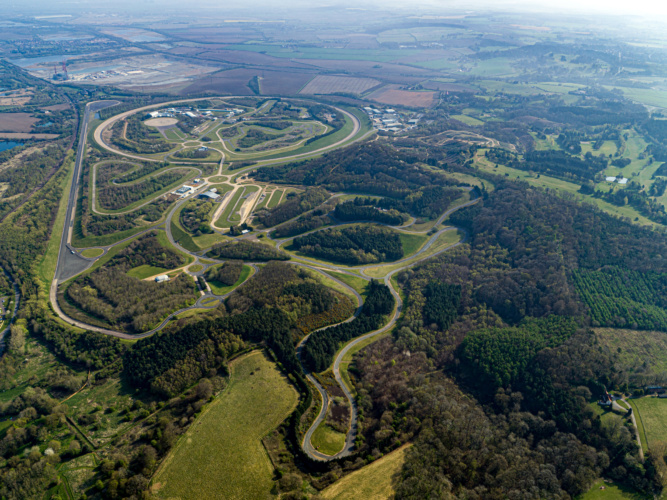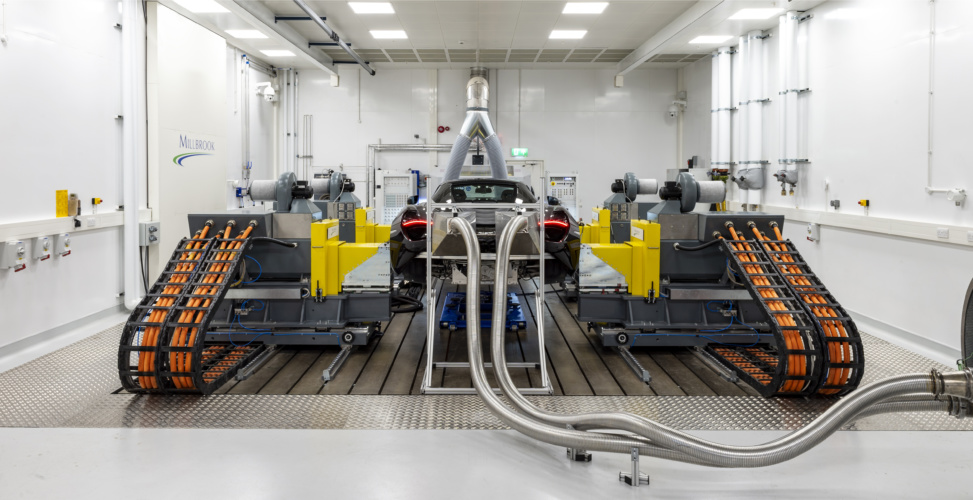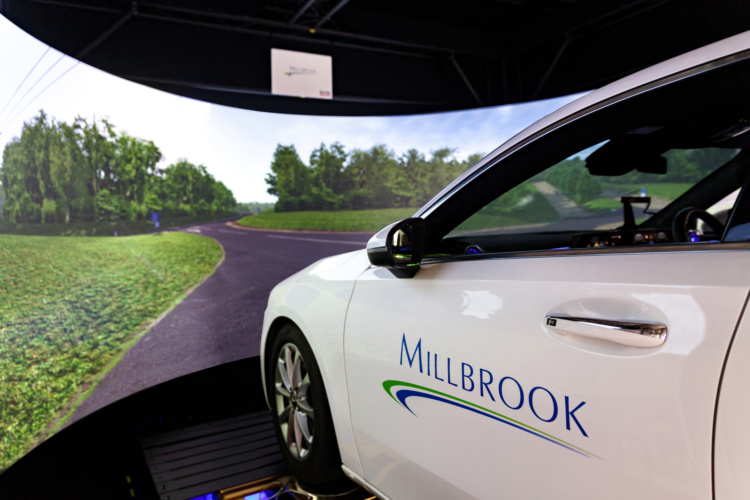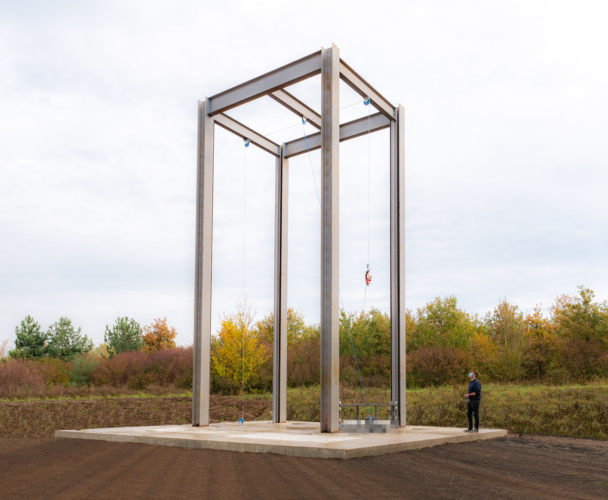From the rise of electrification to the advent of autonomy, the automotive sector is going through a noted period of rapid evolution. And as technical director for UK test services at Millbrook, John Proctor is at the sharp end of that change - charged with delivering the test capabilities that are key to getting an ever-more complex array of automotive technologies safely onto the road.

Given the pandemic-induced slump in new car sales, one might expect things to be quieter than usual at Millbrook’s UK facilities (which include its iconic Bedfordshire proving ground and its powertrain site in Leyland, Lancashire) but talking to The Engineer earlier this year Proctor said that whilst there may be fewer people around, things are busier than ever. If anything - he said - the pace of technology change has, in fact, accelerated.
If you were to take a snapshot pre and post-COVID they won’t join up, there will be a step in technology. It’s pushed OEMs to introduce more EVs quicker than they would have done before
In much the same way that the civil aviation sector has used the current hiatus as a spring-board for its own low carbon plans, it appears, he said, that automotive firms are also taking the opportunity to focus their attention on the technologies that will define the next generation of products. “The industry is having a break in terms of downturn in demand so they’re jumping ahead to new products. If anything, COVID has accelerated change. Because of demand changes people are trying to release products that are attractive to the market and are the future. COVID has effectively dragged things to the left on the timing plan. It’s almost removed a segment of the timing plan and shifted everything forward.”
One of the most striking aspects of this phenomenon, he said, is the rapid ramping up of OEMs’ electric ambitions. “If you were to take a snapshot pre and post-COVID they won’t join up, there will be a step in technology. It’s pushed OEMs to introduce more EVs quicker than they would have done before.”

For Millbrook, this has meant a growing demand for the range of services and technologies required to test electric and hybrid vehicles. And whilst EVs have always been at the heart of its planning for the future, this COVID driven technology jump - combined with the UK government’s pledge to outlaw new fossil-fueled vehicles by 2030 - has brought many of these plans forward a number of years, said Proctor.
In general terms, he explained, one of the key challenges presented by the advent of electrification has been the added complexity this brings to the testing process, and the group’s facilities have had to evolve to cope with this. “When you go from a traditional IC engine powertrain to a PHEV or some sort of hybrid powertrain, you’ve introduced a lot of technology that all has to work in an integrated and seamless way. You’ve suddenly got a number of more degrees of freedom, a lot more calibration parameters, a lot more interactions that can go positively or negatively so you have a lot more testing to do.” Proctor said that Millbrook’s powertrain test rigs have been developed with these integration challenges in mind, and now enable engineers to integrate different parts of a powertrain a piece at a time all the way up to an entire vehicle.

Electrification is also driving a requirement for component level testing for many key EV technologies: in particular batteries.
Key facilities here include the battery lab, which provides a range of test methods to assess the life safety and performance of vehicle batteries: from capabilities that enable engineers to cycle batteries and simulate their life in a car; through to a host of so-called abusive tests, which are used to explore how batteries respond to conditions ranging from extreme temperatures and altitudes through to thermal and mechanical shocks.
MORE FROM THE ENGINEER
Comment: Brexit will drive demand for UK battery testing
Recent additions to this suite of tools include a battery turnover facility, which can be used to simulate the effect of a rollover crash on a battery pack, and a newly installed 10m drop tower - bristling with sensors and analytical equipment - that customers can use to understand how their products respond to being dropped. This capability will be particularly useful for gauging the kind of impacts that batteries might be subjected to when they’re being moved around a warehouse said Proctor.

A further key investment, due to come online in March 2021, is a new heavy duty dynamometer known as the Variable Temperature Emissions chamber (or VTEC2). This facility, said Proctor, will be particularly useful for manufacturers of larger vehicles such as buses, trucks and off highway vehicles, who are also now being swept along by the low carbon transport push. As well as traditional fuels, VTEC2 has also been configured to test electric vehicles and those using a range of alternative fuels such as hydrogen, LNG and CNG, he added.
Beyond the push for sustainable mobility, another important trend driving Millbrook’s offering is the growing momentum behind the development of connected and autonomous vehicles (CAVs). Here, the group is developing a range of systems and facilities that customers can use to evaluate and develop the underpinning technologies for this next generation of vehicles.
One key recent initiative here is the AutoAir project, winner of the Data & Connectivity trophy in The Engineer’s recent Collaborate To Innovate awards.
Led by network operator Dense Air, this saw the development of a 5G testbed that customers can use to support the development , testing and validation of CAVs.
Proctor said that following on from this project the group is now upgrading the 5G network to work on different frequencies, such as those that are more available in Japan and the US, thereby enabling manufacturers to test vehicles in the UK on frequencies that are available in these export markets.
Alongside physical facilities, Millbrook has also embraced the digital revolution in recent years, with the introduction of a highly accurate, virtual version of its Bedfordshire proving ground.
This digital replica, accurate down to the 1mm level, can be used by customers - in conjunction with Millbrook’s on-site simulator - to simulate vehicle models on a range of different surfaces and in a variety of different environmental conditions.

Proctor describes this virtual testing element as a “pole vault” that enables OEMs to compress the design process by effectively removing many of the early physical iterations and tests that they would have had to go through in the past. “It gives them a lot of information very, very quickly so they can go away and hone the design for the first prototype,” he said.
Despite it’s obvious benefits, Proctor thinks it unlikely that the virtual word will ever completely replace the physical process. “It’s an area of debate,” he said. “But I don’t think it will disappear. You always need to validate your model and you validate your model through physical testing. One of the things I’m seeing now is that the models are more detailed and comprehensive and also the vehicles are more complex, so the level of validation you need to do is much greater. It may be the case that we’ll do a lower number of tests but those tests will be highly complex with lots and lots of data channels on them.”
In common with many other businesses, Millbrook’s adoption of digital technologies has been accelerated by the impact of the pandemic. Indeed, the crisis has triggered what Proctor thinks could be a permanent shift towards far higher levels of remote testing.
Whilst just 18 months ago, most customers would come on site for the majority of the testing process, the restrictions imposed by the pandemic mean that much of this data sharing is now done remotely. For so-called witnessed activities such as homologation and certification, the group has equipped its technicians with headcams that inspectors can access remotely and use to get up close to the testing process without having to go on site. It’s proved to be a highly efficient and effective way of working. “Disruptive events cause you to innovate and cause things to change and I think that remote testing and remote witnessing will prob be here to stay,” said Proctor. “It’s efficient, it reduces travel and disruption…I think it will stay.”

With the pace of technology change showing no sign of slowing, Proctor expects Millbrook’s capabilities to continue to evolve in the months and years ahead. Indeed, at the time of writing, the group was completing a merger with French automotive testing group UTAC Ceram that will mean the Millbrook has pretty much all bases covered in terms of safety testing, vehicle testing and powertrain testing.
“We’ve got a proving ground in Bedford, UTAC have got proving grounds in France, we’ve got a winter proving ground at Test World in Finland and UTAC are developing a proving ground in Morocco,” said Proctor. “As a combined unit we will have a hot weather proving ground, cold weather proving ground, and an inclement weather proving ground. In terms of environments to test vehicles in we’ve covered the lot.”




Nanogenerator consumes CO2 to generate electricity
Nice to see my my views being backed up by no less a figure than Sabine Hossenfelder https://youtu.be/QoJzs4fA4fo